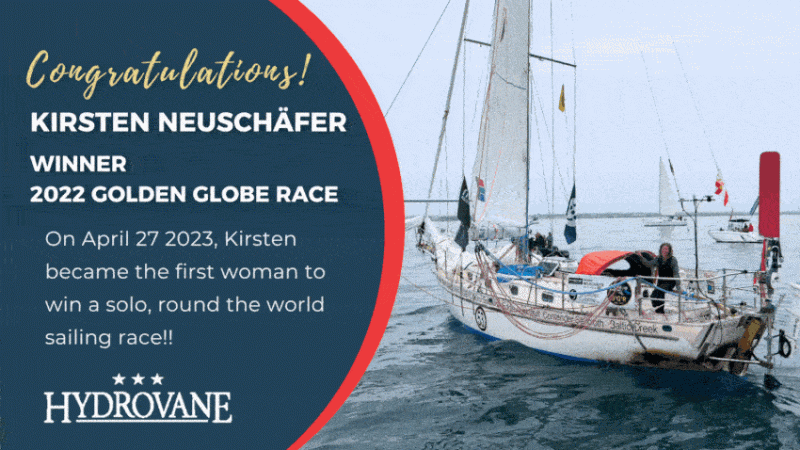
Three Bridge Fiasco Was a Bridge Too Far for Many
The Singlehanded Sailing Society’s Three Bridge Fiasco never fails to disappoint. Unless you fall into a wind hole and never recover. Or don’t make it to Red Rock or TI before a killer ebb starts. On the other hand, every one of the 301 competitors who signed up knew in advance they were signing up for a fiasco, so how can you be disappointed if it is one?
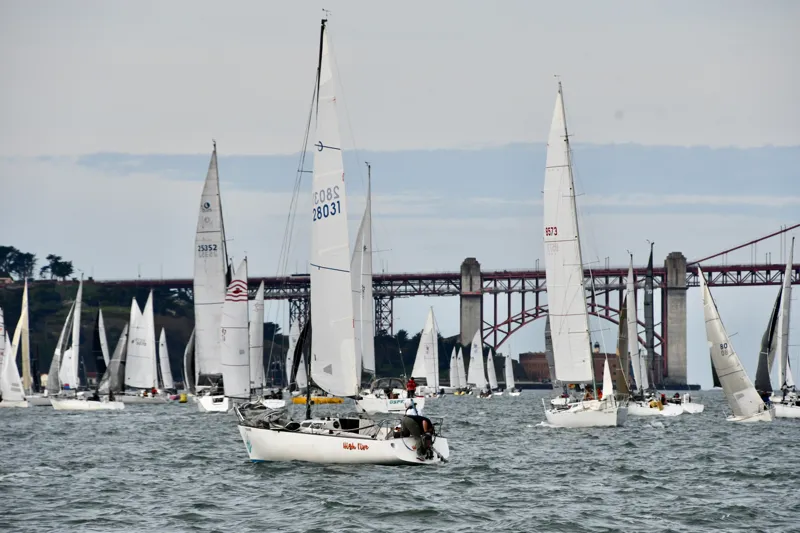
About 23 boats did not make it out for the day, and of the remaining 278 boats,150 finished and 128 retired.
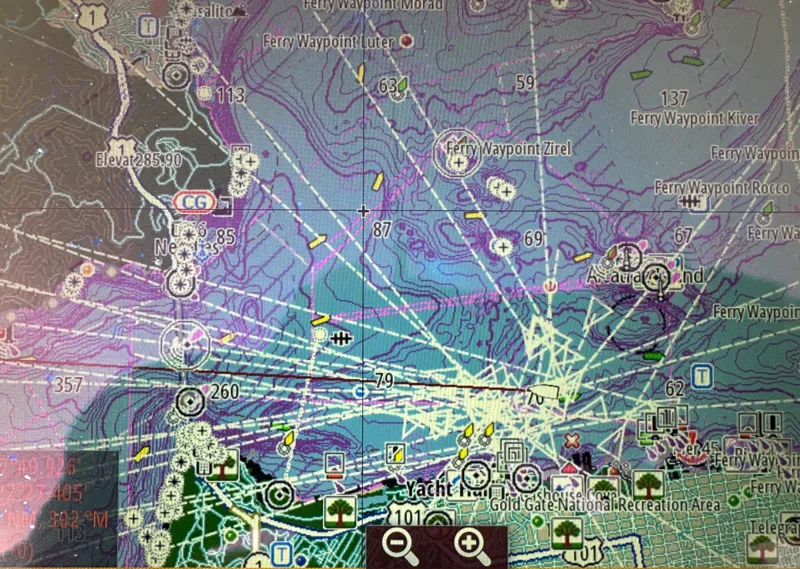
The forecast we saw on Windy looked uninspiring: light airs under 10 knots from the NE for most of the day. Despite the forecast conditions, almost 300 light-air masochists and optimists showed up to prove the app wrong in an attempt to beat the riddle of the Bay and their fellow competitors.
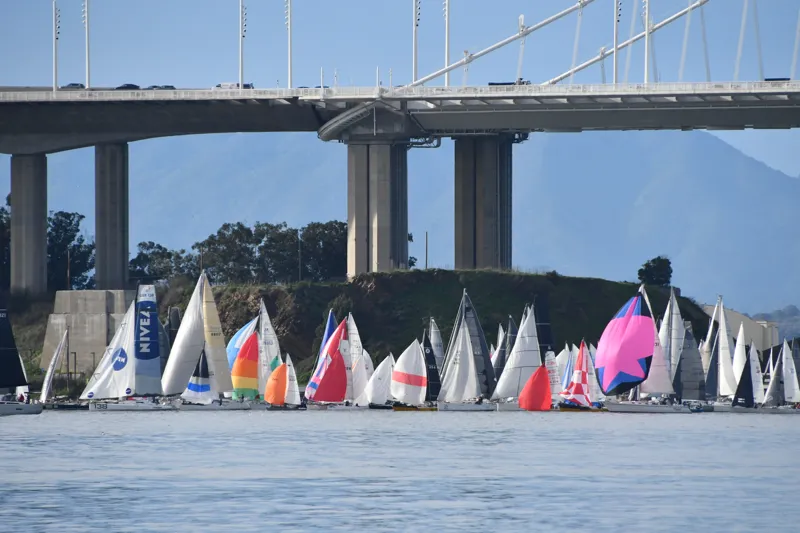
As everyone knows, the race is a complete crapshoot that anyone can win. That is, until you look at the results year to year. Despite the well-known complications of finding your way through the sailing version of a Bay full of mini-golf course hazards, potholes and speed bumps, many familiar names regularly rise to the top. It’s a reminder that it’s always hard to beat good sailors on well-equipped, well-prepared boats with excellent strategy and tactics. Fortunately, an element of luck does occasionally gift dedicated optimists with good results.
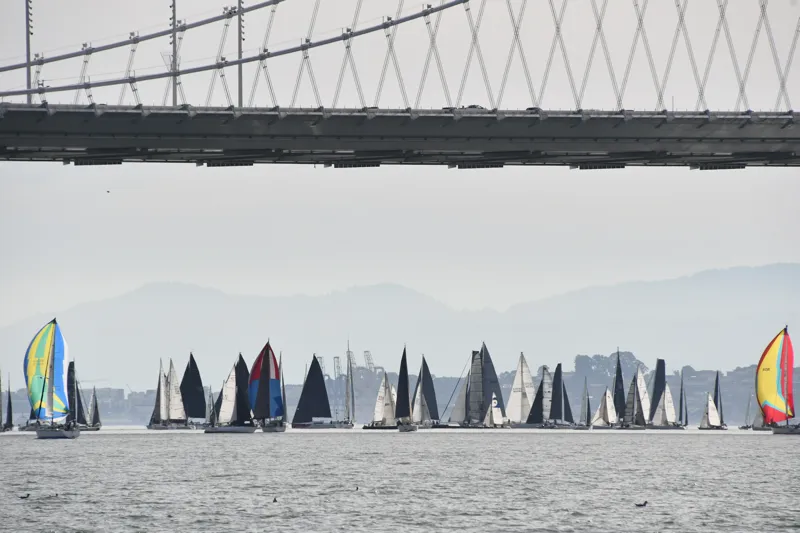
From our scan of the results in 2023, we see that Randall Rasicot aboard his Express 27 Tequila Mockingbird, Scott and Leslie Easom aboard 8 Ball and Rufus Sjoberg aboard his J/125 Rufless all won their classes two years in a row. It’s amazing when people can have such consistent “luck.” Others who did well this year finished deep in their classes last year, which is enough to remind us all never to give up trying.
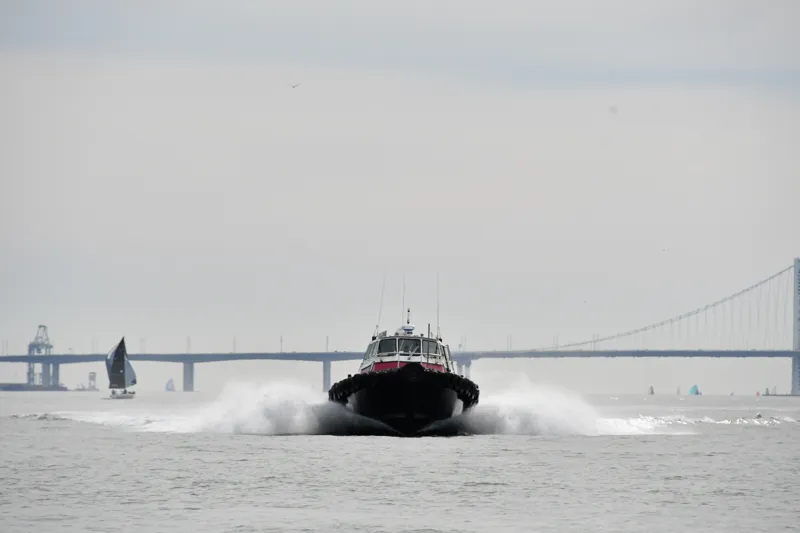
It turned out to be a picture-perfect day though, as predicted: short on wind but with enough breeze on enough of the course to get most boats around. With a flood turning to an ebb, the majority of boats, despite whatever their pregame strategy was, elected to take the 10+ knot morning northeasterly to reach against the flood toward Blackaller, and then take advantage of the flood and breeze to beat their way through Raccoon Strait toward the Three Bridge Fiasco’s $25 million racing mark (Red Rock). There were lots of tricky current lines to call on this leg, as some early ebb started along the Tiburon shoreline. Most left Red Rock to starboard and did the best they could to get to Yerba Buena before the building ebb overcame the breeze and the fleet. Nobody made it.
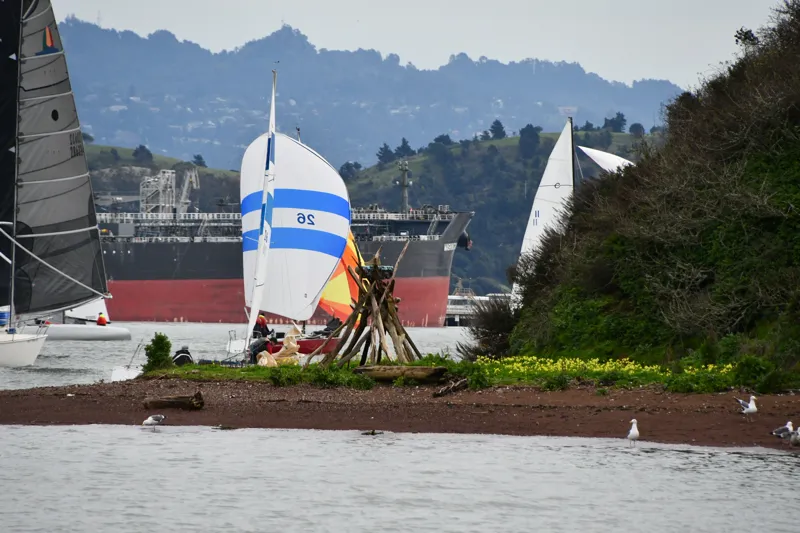
The Bay Bridge became nature’s “general recall,” forcing most of the fleet into a fresh start in the midst of a colorful, windless, spinnaker-laden sailing mosh pit. The crowd lingered under the watchful eye of the Coast Guard restricted zone off the island, waiting for the breeze to fill in. It was about this time (1430?) Channel 72 came to life with many notifications to the race committee of boats retiring. Everyone else patiently waiting for breeze could feel themselves being lifted one notch higher in the standings with each retirement. For most, the patience was rewarded. The breeze miraculously returned, allowing spinnakers to fill and the crowd to spread out and find a lane, so boats eventually worked their way around the island, where the adverse ebb turned to an ally in their favor with breeze and current suddenly whisking everyone toward the GGYC finish line.
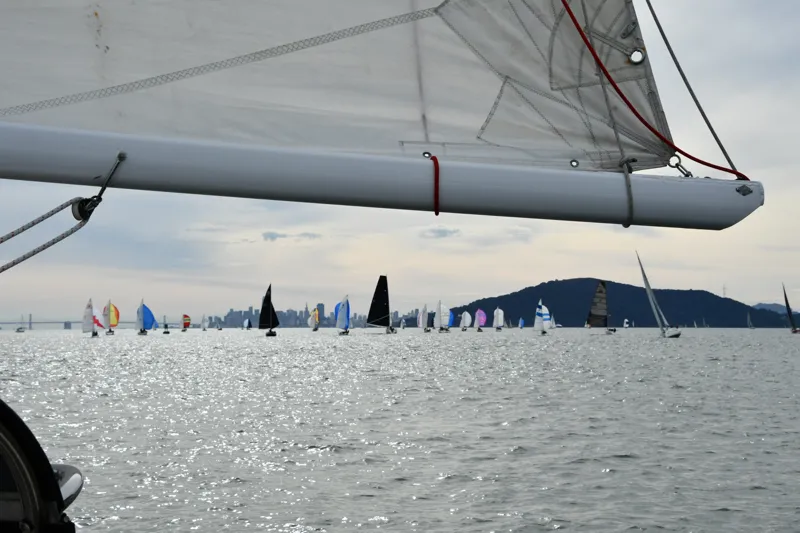
We were happy to join the crowd making it around, but could imagine the panic on the Golden Gate YC race deck as the finishing dam broke, with over 130 competitors crossing the line between 4:00 and 5:00. They must have felt like the engineers watching the Oroville Dam spillway threaten to break down. Somehow the race committee persevered and finished over 150 competitors in about an hour and a half.
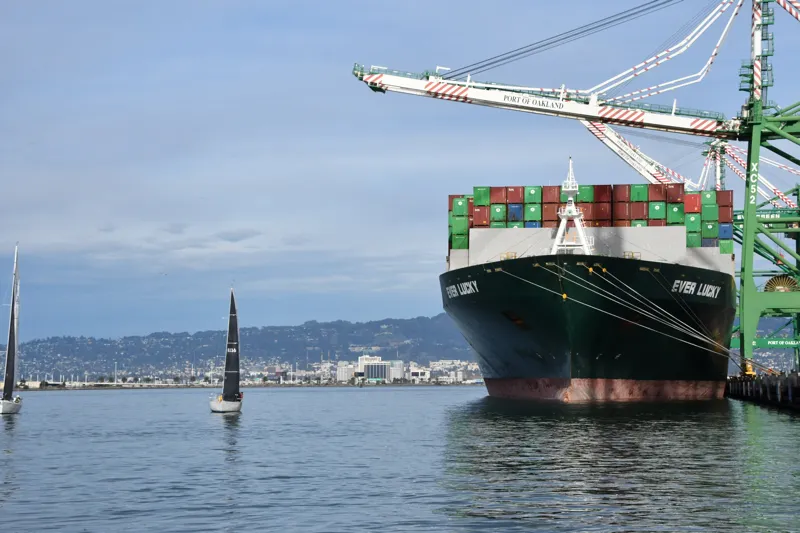
The clockwise direction starting at Blackaller was the direction of choice, but others chose differently and, incredibly, also finished well. We asked Dave Hodges and Scott Easom the secret to their success. Dave reported that he and crew John Kernot aboard his Farr 38 Timber Wolf were one of the few who took the “road less traveled” by going to Treasure Island first. He says he spent about two and a half hours behind the island looking for the breeze while imaging all the competitors romping their way around Red Rock in the other direction. (The TI hole would get them later.) Dave and John stuck with their plan. Patience and perseverance paid off with a class win. Scott Easom was the fastest of the singlehanders, finishing at 16:00:48, even though he chose to go to TI first.
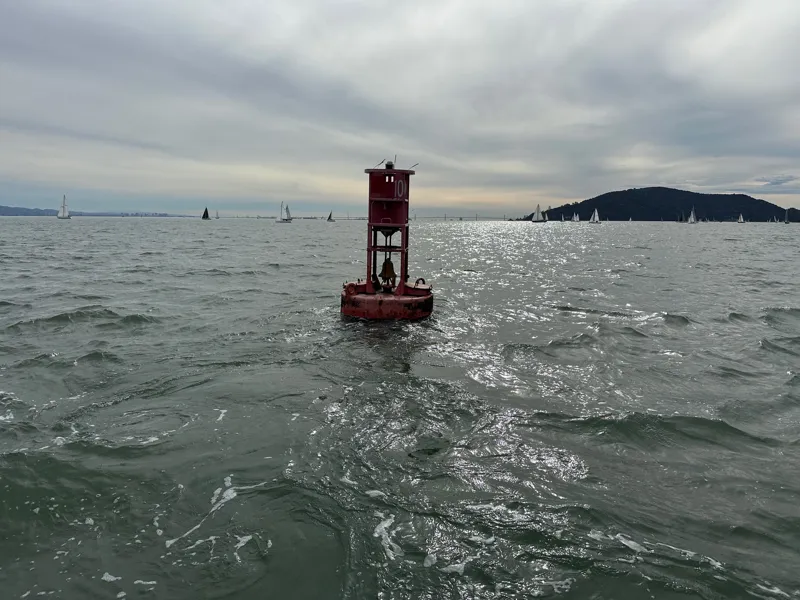
Gordie Nash on Arcadia went Blackaller, Yerba Buena and Red Rock, and came in second, finishing in the midst of the 4:00–5:00 p.m. finish-line rush hour. Cinde Lou Delmas and Milly Biller on Another Girl went the alternate route and finished fifth in class in the middle of the finish-line mayhem. This all goes to prove it really doesn’t matter which way you go, and you could save a lot of strategizing time the week before, since you know you’re going to change your mind Saturday morning anyway. We’d like to hear in comments below who did change their mind on Saturday morning, and who else did anything but the majority choice: Blackaller, Red Rock and TI.
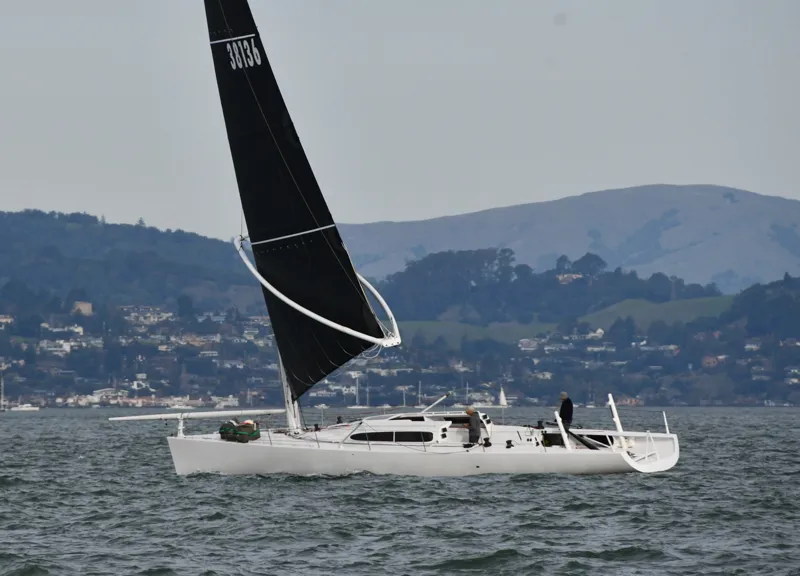
Only five boats finished before 4:00 p.m. starting off with Rufus Sjoberg and Dylan Benjamin on the J/125 Rufless at 15:48:10, Charles Ray and Zan Drejas aboard the debut of the new Wylie 60 C Cubed at 15:52:54, James Nichols and Cody Hall aboard the J/125 Velvet Hammer at 15:54:58, Brendan Meyer and Skip Shapiro aboard the Wylecat 30 Uno at 15:54:18, and Nicole and Nick Voss on the Moore 24 Enamored at 15:57:16.
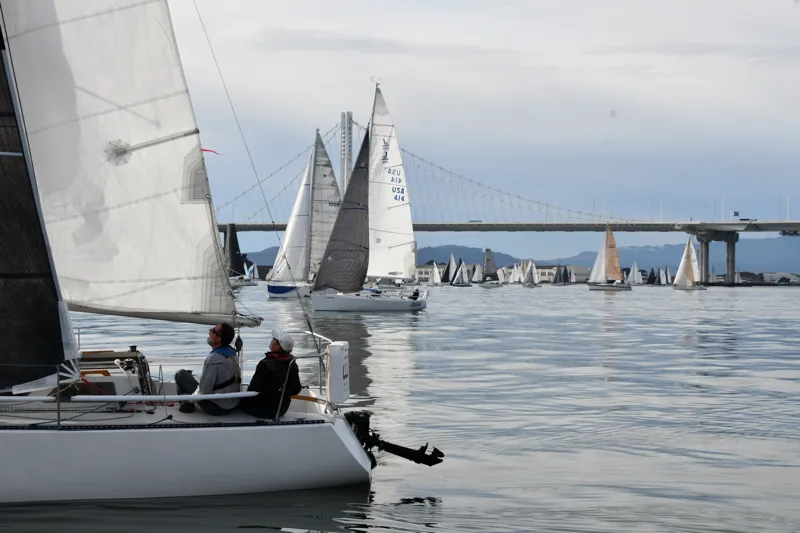
We can understand the “retiring” calls from those drifting behind TI at 2:30 p.m. if their home berth was up the Estuary or in Richmond. They could have fought their way to the finish off the Golden Gate Yacht Club only to find themselves fighting a 3-4-knot ebb to get home. Tough call.
Whether you made the finish or retired, everyone had their moments of glorious January sailing on San Francisco Bay. The air was warm and the seas calm, and being surrounded by the spectacle of almost 300 boats on one starting line was a reward in itself. Congratulations to all the winners. We’ll have to see whose “luck” holds next year. It could be you. We’ll have a more complete report in the March issue.
You can see full results here.
You can pick up the new, February issue of the magazine at any of these locations starting January 31 here.
Volunteer Creates Energy, and Positive Environmental Change
Have you ever wondered how some of the nonprofit sailing organizations get things done? Volunteers play a big part in handling the jobs needed to run the Sausalito-based nonprofit Call of the Sea. The payoff for the volunteers is usually the satisfaction of knowing their efforts are making a positive difference. But every so often, they get the additional rewards of recognition from areas outside of their immediate beneficiaries.
In this instance, we’re referring to Call of the Sea (COTS) volunteer Mike Wing, who was recently named Heart of Marin Volunteer of the Year by the Center for Volunteer Nonprofit Leadership. Mike has been an active volunteer at COTS since April 2021. He is an author, scientist, and full-time high school classroom science teacher. He holds a PhD, and is the author of the book Passion Projects for Smart People. On top of all that, he dedicates his days off to the sailing education organization, amassing more than 285 hours in 2023. He’s been involved in projects from school sails to community sails, to maintenance, and training new volunteers.
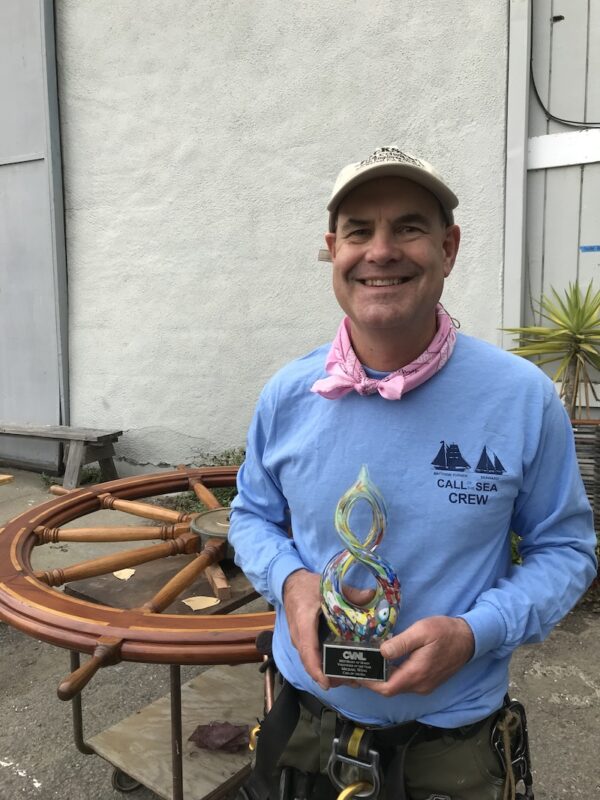
In addition to the regularly required duties, Mike took the initiative of organizing a much-needed and valued Naturalist Kit for use aboard the Seaward and Matthew Turner, and then sprang into action teaching students and the crew about the marine life in the S.F. Bay Area.
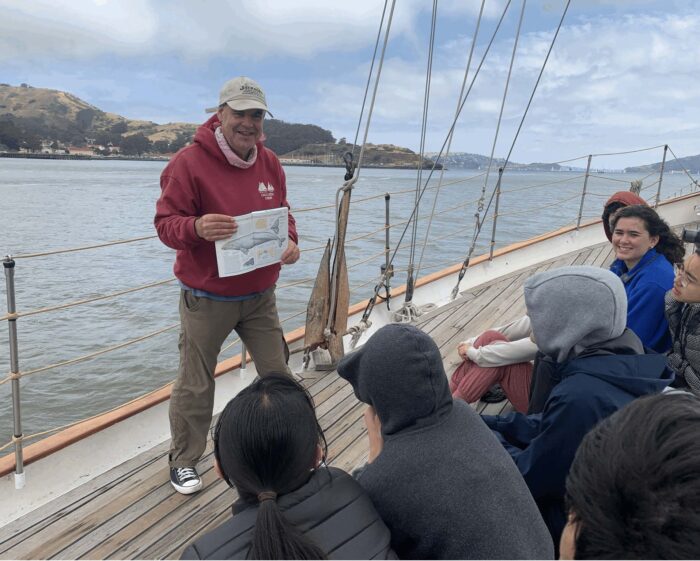
But wait, there’s more. While taking part in the onboard manta trawls (basically a net for plastic particles) in 2021 and 2022, Mike noticed the prevalence of little blue bits of Styrofoam that break away from the billets that support floating docks. Together with COTS crew member Amy Green, Mike spearheaded a project that impacted environmental change within the city of Sausalito. After presenting their findings on the issue of the Styrofoam to the Sausalito City Council, they succeeded in creating a positive change for the environment.
“Amy and I presented the issue to the Sausalito City Council and suggested some slightly more expensive alternatives that do not slough off plastic particles into the ocean,” Call of the Sea wrote on their website. “Sausalito said yes to a ban on unencapsulated blue foam flotation!”
We love stories about people sailing, but we also love stories about people who give of themselves to help others get the most out of their time on the water. And in this case, we also love hearing about Mike’s contribution to kids’ marine education, and the improvement of our waterways. Well done, Mike Wing!
You can read more about Mike and the work he does at Call of the Sea here. If you would like to add your time, knowledge or skills to the team at COTS, you can volunteer here.
Steering the Dream With Hydrovane
Hydrovane is your best crew member: an independent self-steering windvane and emergency rudder/steering system … ready to go!
Why Stand in Line When You Can Float to the Immigration Office?
As more and more of our bureaucracy becomes automated, it’s fun to see people finding innovative ways to avoid the lines we’re often forced to endure when trying to get things done. Richard Spindler of Profligate, the Baja Ha-Ha mothership, shared the following story of sailors afloat bypassing the standing lines in Mexico.
When I reflect back on my life, one of the “coolest things ever” happened just 78 days ago. It was when, during the dark of night at remote Bahia Santa Maria, a Mexican immigration office was opened up in the cockpit of Profligate. And in the span of less than two hours, hundreds of Ha-Ha participants were checked into the country.

Actually, the participants weren’t on Profligate, they were in dinghies behind the cat. Their passports were handed to the team on Profligate who set up an assembly line to get the passports to the immigration official. An immigration official who, I might add, had made a rough three-hour small-boat trip from San Carlos to get there.

It was not only so cool to have an immigration office opened up on my boat, it also saved the Ha-Ha. Without this help, the Ha-Ha would have become logistically impossible.
Which is why I’m taking this opportunity to tell everyone the same team is eager to do it again this fall. And to remind everyone that the Ha-Ha XXX start is only 284 days away. And that sign-ups begin at noon on May 9, just 105 days from now.
I hope you’ll join us and become part of Ha-Ha history.
The Why of Anchoring — Enjoying Life on the Hook
Ask 10 cruising sailors about anchoring and you’ll get 10 different diatribes on methodology and etiquette. How much scope should you use in a packed anchorage, or how far away should you be from the next boat? What size, shape, brand, or anchor should you use? There’s also the same litany of opinions about rope versus chain, and how much of each in what kinds of bottom conditions. It seems as if every sailor, armchair or otherwise, has an opinion about how you should anchor your boat.
But my thoughts on the matter always lean toward the why. Why should you go through the trouble of actually anchoring your boat when there are so many other options in this day and age? In the Bay Area alone, there are more than 200 marinas, docks, walls and yacht clubs from Coyote Creek to the Carquinez Strait; in the US, there are literally thousands of decadent places to park your boat for the night. So, the options for pulling in, tying up, plugging in, and kicking back are almost endless practically anywhere you want to travel by boat in this country. The sheer number of amenities for the modern sailor at any one of those places is mind-boggling.
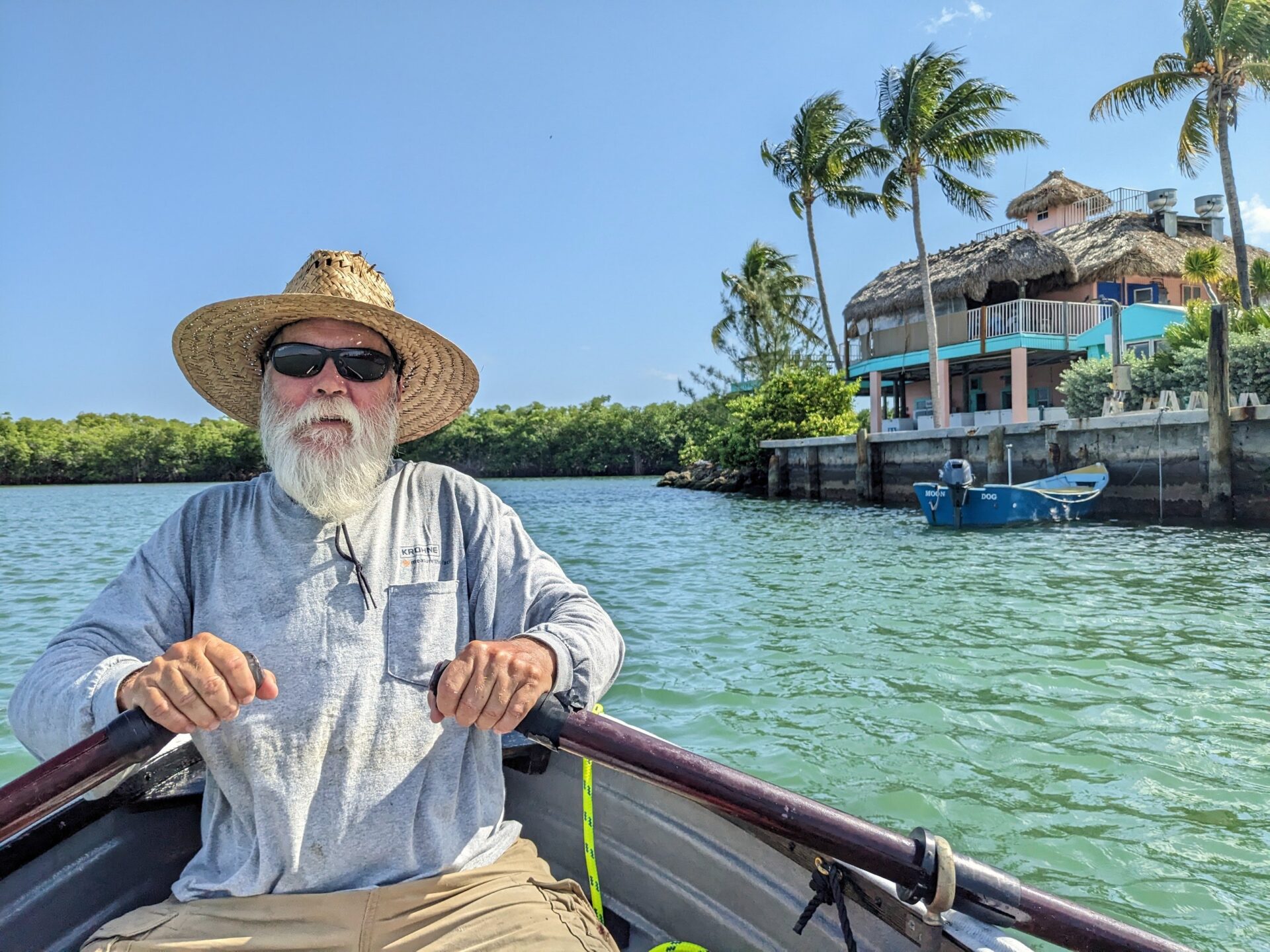
So why? Why would you put yourself through the stress and trouble of dropping that expensive piece of ground tackle, counting out scope, setting the hook, hauling a day shape, and turning on that anchor light? Because it’s totally awesome, that’s why!
The way a sailboat lies at anchor is an incredible experience. It’s human technology at its best. The way she moves and flows with the tides and the winds can make a sailor feel like a part of the very elements and forces that move the universe. Yeah, sure, when those forces are cantankerous, it can get intense, but when you’re hook-down in the lee of a dark island on a moonless night in the middle of nowhere, the galaxies near and far can inspire you like nothing you’ve ever experienced. If you’re like us and use only wind and solar to charge your batteries, you can just shut off that wind generator to enjoy a silent night in the Milky Way.
The price is right, too. Over the last year, my partner, our cat and I have anchored our electric Baba 30 sailboat over 300 times while covering about 4,000 miles in some of the most awe-inspiring places cruising sailors could imagine. Most of that time, it was free.
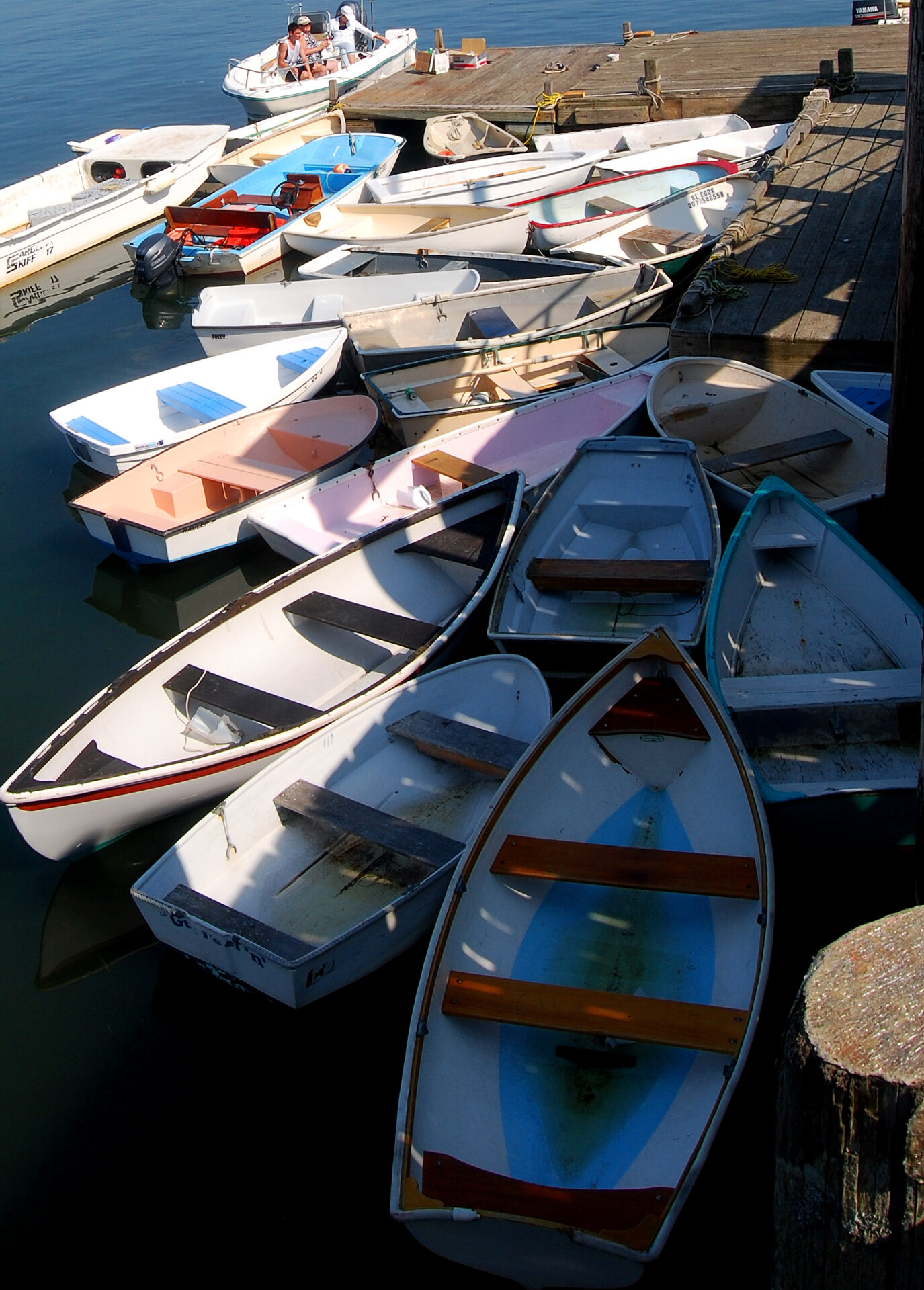
In Hilo, Hawaii, on the Big Island, you used to be able to anchor for free in Radio Bay indefinitely, but the anchorage has been closed since 2020. It’s not clear what the future holds for Radio Bay, but cruisers can still anchor in Reeds Bay just west of the cruise ship terminal and north of the moorings — it’s deep, but doable! Granted, there are more marinas in the state of Arizona than there are in the entire Hawaiian archipelago, and marina waiting lists can be 15 years long, but that doesn’t stop dozens of cruising sailors from making that pilgrimage yearly and sticking strictly to marinas. We bounced from anchorage to anchorage and marina to marina as transients for almost a year before selling our boat there and moving to India in 2008.
Continue reading in the January issue of Latitude 38.
Have You Tried Latitude in Your Ears?
Get the latest and greatest sailing stories, delivered right to your ears each week with Good Jibes — the best sailing podcast we know!

